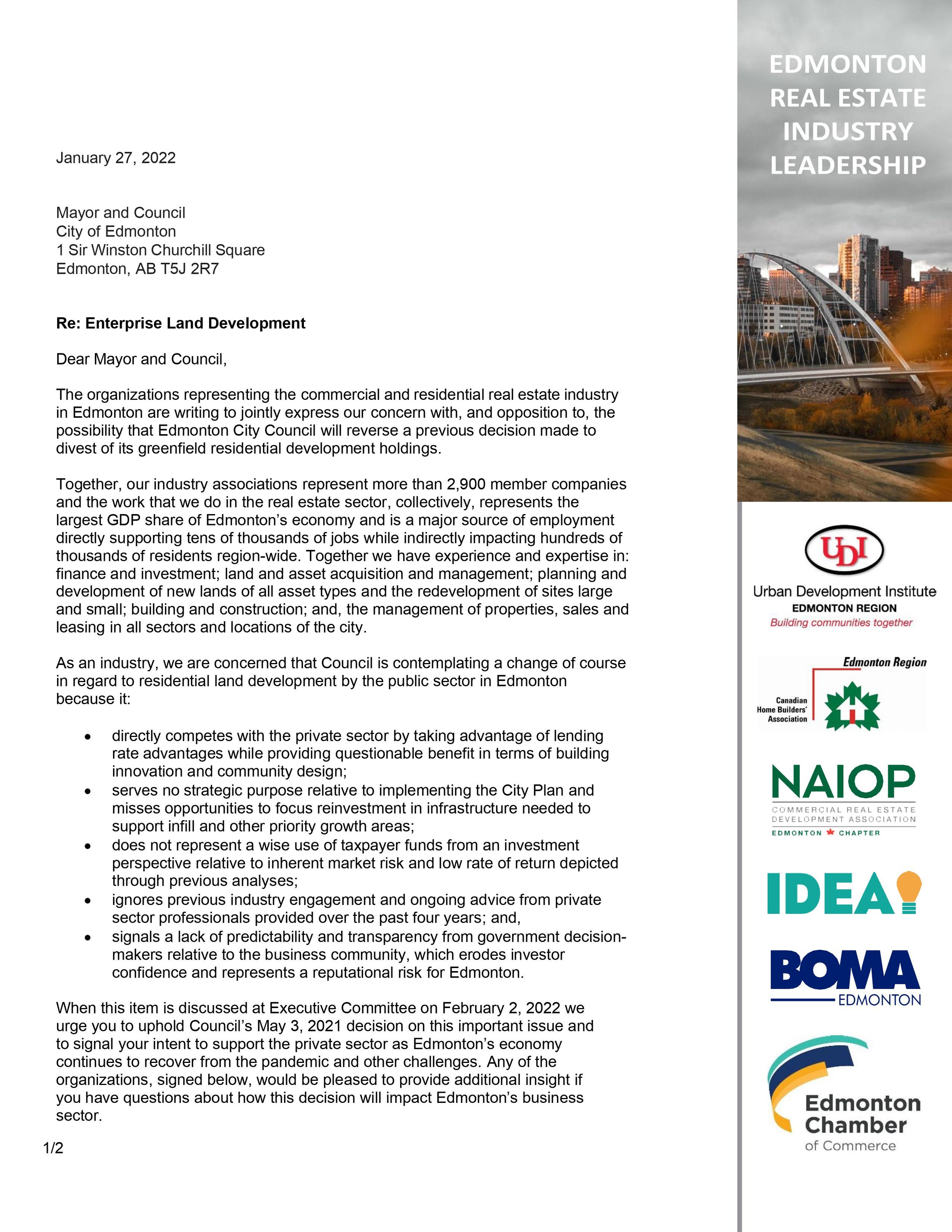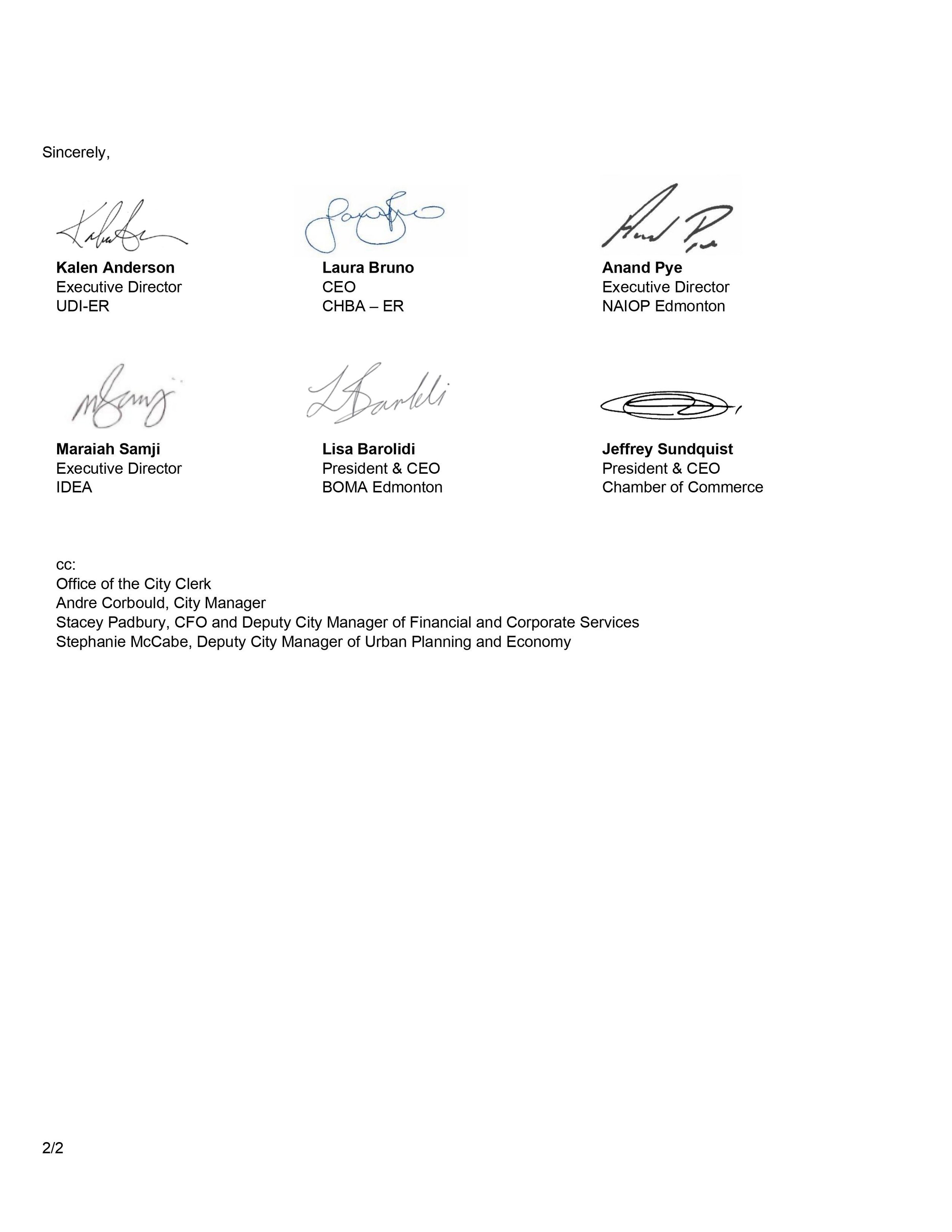Background
DC2s are site specific, custom zones created to allow for developments that could not otherwise be accommodated under a standard zone. Due to the complexity of creating DC2s, as well as their site specificity, DC2 rezonings take additional time and money (in the form of consulting fees for planning and design, consultation, the application fee, etc). Additionally, any updates to a DC2 require a full rezoning process and Council approval.
Since the ostensible purpose of DC2 districts are to allow for unique developments, the permitted uses, height, density, FAR and setbacks provided in DC2s should be significantly different from the regulations of any conventional zone. IDEA investigated the 195 DC2 zones created from October 15, 2015 (DC900) to January 22, 2020 (DC1095) to find out the extent to which that is in fact the case.
Key Research Questions
What patterns did DC2s create over this period?
Are DC2s often very similar to Standard Zones?
What are the costs associated with DC2s for developers and the City of Edmonton?
Are there ways to reduce the number of DC2s created?
Methodology
IDEA created a database to record the location, purpose, height, density, FAR and setbacks of 195 Direct Control 2 zones adopted between October 15, 2015 and January 22, 2020. Only the DC2s with a residential-related purpose were considered for this study.
The parameters of the selected residential (or mostly residential) DC2s were then compared against the regulations of conventional zones. The observations that did not resemble any conventional zone in a reasonable way were discarded. These observations are assumed to be cases in which the adoption of a DC2 is indeed granted. The rest of the observations were classified according to the closest-related conventional zone.
Measures of spread were tested for each class to determine the most suitable one to achieve the purpose of this study. Standard deviation was selected as the statistical test to analyze the dispersion of the observed parameters.
Results
From the total 195 DC2s that were recorded in the database, 119 (61%) had a stated purpose of providing for residential or mostly residential development. The other 76 observations were recorded in the database but excluded from the statistical analysis.
From the total 119 residential-focused DC2s, 39 (33%) did not resemble any conventional zone. This means that only 33% of the DC2s that were examined make a strong case to grant a direct control zone. The remaining 80 (67%) were closely related to one of the conventional zones in terms of parameters such as height, density, FAR and setbacks. These observations were classified accordingly. The resulting classes in order of predominance were RA9, RA8, RA7 and RF5.
For the statistical analysis, measures of central tendency and dispersion were performed for the aforementioned parameters in each class. However, the values recorded in the database for density had inconsistent measurement units and were left out of the final statistical analysis to avoid bias (though they were still recorded and observed for patterns).
The final analysis was based on the measures of mean and standard deviation. The mean was calculated as the statistical average of the observations for each parameter, and then compared to the values of the corresponding conventional zone. The standard deviation, in this case, has the purpose of demonstrating the dispersion of the observations vis à vis the corresponding conventional zone regulations and not in relation to each other. Thus, for the purpose of calculating the standard deviation, the assumed mean was the value for each parameter as stated in the Zoning Bylaw for the corresponding conventional zone.
The results for each of the resulting classes are presented below.
1. RA9
28 of 80 observations (36.25%) were deemed comparable to the RA9 zone in the Zoning Bylaw, 23 had ground floor commercial and 5 had ground floor residential. The Zoning Bylaw 12800 for High Rise Apartment Zone (RA9) was amended in June 2018. Relative to this study, the FAR and height were changed. Prior to June 2018, FAR was 3 and the maximum height was 45 m. The amendments categorized height and FAR based on site area. This accounts for site constraints with modest high rise buildings and more flexibility on larger sites to achieve a high rise development with a lower FAR. Site areas thresholds are less than 1800 m2, 1800-7500 m2, and greater than 7500 m2, and corresponding FAR are 2.2, 5.2, and 4.3, respectively. Maximum height ranges include towers from 15 m to 58 m, and podiums or other built forms a maximum of 15 m. These regulations can be found in Table 1 in the RA9 Zone.
For the purpose of this analysis, the observations associated with the RA9 district were divided into two groups according to whether they were adopted under the previous or new regulations. This study found 12 DC2 observations between October 2015 and June 2018, and 16 DC2s between June 2018 and January 2020.
a. Before June 11, 2018
A total of 12 DC2s were approved and are deemed comparable to the RA9 district between October 2015 and June 2018. The Zoning Bylaw set a maximum height of 45 m and the calculated average and minimum height for the 12 DC2s was 80.8 m and 23 m, respectively. Height had a standard deviation of 49.2. The calculated average FAR was 6.63 which is 3.63 greater than the FAR prescribed in the Zoning Bylaw (3) prior to June 2018. FAR has a standard deviation of 3.04. Front setbacks in the Zoning Bylaw was set to 6 m. The calculated average front setback for the 12 DC2s is 3.05 m with a standard deviation of 2.81. The average rear setback is 7 m and the standard deviation is 3.23 compared to the 7.5 m rear setback value prescribed at the time in the Zoning Bylaw. The RA9 side setback was also set at 7.5 m, the average calculated value was 4.81 m with a standard deviation of 3.29.
Of these observed 12 DC2s, 2 have a maximum height greater than 100 m and the total range was from 23 m to 280 m. The uses listed in these DC2s were refined lists of the discretionary and permitted uses listed in the RA9 zone. The main needs addressed in the DC2s that are not provided for in the Zoning Bylaw are the provision of mixed uses and TOD design/features.
b. After June 11, 2018
A total of 16 DC2s were approved and are deemed comparable to the RA9 district between June 2018 and January 2020. The Zoning Bylaw outlines setbacks according to three height classes (above 15m, 15 m or below with ground floor residential, and 15 m or below with ground floor commercial), and assigns FAR based on site area. Due to this categorical classification in the Zoning Bylaw, standard deviations for height and FAR were not calculated. The average and minimum height for the 16 DC2s was 107.5 m and 35 m, respectively. The calculated average FAR was 10.5. Front setbacks for structures greater than 15 m in the Zoning Bylaw is 6 m. The average front setback is 4.39 m with a standard deviation of 2.96. The average rear setback is 4.39 m and the standard deviation is 3.46 compared to the 7.5 m rear setback value in the Zoning Bylaw. The RA9 side setback is also set at 7.5 m, the average calculated value was 2.79 m with a standard deviation of 4.09.
Of these observed 16 DC2s, 8 has a maximum height greater than 100 m and the total range was from 35 m to 170 m. The uses listed in these DC2s were refined lists of the discretionary and permitted uses listed in the RA9 zone. The main needs addressed in the DC2s that are not provided for in the Zoning Bylaw are the provision of mixed uses and TOD design/features.
2. RA8
Out of 80 DC2 observations, 16 (20%) were classified most comparable to the RA8 zone. On August 26, 2019 the Zoning Bylaw was amended to introduce more flexibility to 5 different zones in order to allow for more diverse multi-unit housing options to be built in neighbourhoods across the city. The Medium Rise Apartment Zone (RA8) was one of those five districts part of the Missing Middle Zoning Bylaw Review. Maximum FAR changed from 2.5 to 3.0. Minimum front setbacks changed from 6 m to 4.5 m. Minimum side setbacks changed from 1 m/storey or 2 m minimum, to 1.2 m or 3 m where building height is greater than 10 m. Where a lot is adjacent to a street the side setback changed from 4.5 m to 3 m. Rear setbacks did not change from 7.5 m unless the maximum height of the development was 6.5 m then the minimum rear setback changed to 1.2 m.
For the purpose of this analysis, the observations associated with the RA8 district were divided into two groups according to whether they were adopted under the previous or new regulations. This study found 15 DC2 observations between October 2015 and September 2019, and 1 DC2s between September 2019 and January 2020.
a. Before August 26, 2019
There were 15 DC2s deemed comparable to RA8 that were adopted between October 2015 and August 2019. The average height was 19 m with a standard deviation of 5.38, compared to the allowed maximum height of 23 m for the RA8 zone in the Zoning Bylaw. The FAR in the Zoning Bylaw for RA8 is 2.5 and the calculated average FAR for the DC2s was 2.27 with a standard deviation of 0.62. The front setback value for an RA8 zone is 6 m and the observed average value for this DC2 was 5.27 m with a standard deviation of 1.65, a difference of 0.73 m from the conventional zone. The average rear setback distance was 6.22 m with a standard deviation of 2.01, compared to the 7.5 m distance in the Zoning Bylaw. The side setback was more scattered. The side setback average distance and standard deviation was 4.09 m and 2.30 respectively.
Permitted and discretionary uses for this observed DC2 was not examined in detail for this quantitative analysis, though there are considerable similarities to the conventional RA8 zone. The main needs addressed in the DC2s that are not provided for in the Zoning Bylaw are the provision of mixed uses and TOD design/features.
b. After August 26, 2019
There was one DC2 deemed comparable to RA8 that was adopted between August 2019 and January 2020. The height was 23 m with a standard deviation of 0, compared to the allowed maximum height of 23 m for the RA8 zone in the Zoning Bylaw. The FAR in the Zoning Bylaw for RA8 is 3.0 and the FAR for the DC2 was 3.2 with a standard deviation of 0.05. The front setback value for an RA8 zone is 4.5 m and the observed value for this DC2 was 2.5 m with a standard deviation of 0.5, a difference of 2 m from the conventional zone. The rear setback distance was 6 m with a standard deviation of 0.36, compared to the 7.5 m distance in the Zoning Bylaw. The side setback was more scattered. The side setback distance and standard deviation was 1.5 m and 0.09 respectively.
Permitted and discretionary uses for this observed DC2 was not examined in detail for this quantitative analysis, though there are considerable similarities to the conventional RA8 zone. The main needs addressed in the DC2s that are not provided for in the Zoning Bylaw are the provision of mixed uses and TOD design/features.
3. RA7
13 out of 80 observations (16.25%) were deemed most comparable to the RA7 zone. On August 26, 2019 the Low Rise Apartment Zone (RA7) was one of those five districts that were amended as part of the Missing Middle Zoning Bylaw Review. The maximum FAR changed from 1.2 to 2.3. Minimum front setback was 6 m and is now 4.5 m. For developments up to 6.5 m in height the minimum rear setback was not defined prior to August 26, 2019, but now has a minimum rear setback of 1.2 m. For developments greater than 6.5 m their rear setbacks did not change from 7.5 m. Minimum side setbacks changed from 1 m/storey or 2 m minimum, to 1.2 m or 3 m where building height is greater than 10 m.
For the purpose of this analysis, the observations associated with the RA7 district were divided into two groups according to whether they were adopted under the previous or new regulations. This study found 9 DC2 observations between October 2015 and September 2019, and 0 DC2s between September 2019 and January 2020.
a. Before August 26, 2019
A total of 9 DC2s in the RA7 category were adopted between October 2015 and August 2019. The Zoning Bylaw allows a maximum height of 14.5 m, while the average height of the subject DC2s was 14.63 m, with a standard deviation of 0.5, which is significantly low. Moreover, the FAR prescribed in the Zoning Bylaw (1.2), the calculated average FAR was 2.3 with a standard deviation of 3.20. There were more variation in the values observed for the front, rear and side setbacks. The smallest dispersion was observed in front setbacks, with a mean of 3.83 m and a standard deviation of 7.05, a difference of 2.17 m under the required 4.5 m setback. Side setbacks have an average value of 3.70 and a standard deviation of 2.4, which is 0.80 under the minimum requirement of the Zoning Bylaw by 4.5 m on average. Rear setbacks, however, had an average of 5.58 m, 1.92 m below the 7.5 m required by the Zoning Bylaw, with a standard deviation of 6.25 (considerably scattered).
Even though the permitted and discretionary uses were not subject to the same rigorous quantitative analysis, there were considerable similarities between the observed DC2s and the Zoning Bylaw regulations for the RA7 zone. The main needs addressed in the DC2s that are not provided for in the Zoning Bylaw are the provision of community supportive services, mixed uses, and TOD design/features.
b. After August 26, 2019
No DC2s in the RA7 category was adopted between August 2019 and January 2020. This may be due to the method used to classify existing DC2s based on the selected regulations and observed uses.
4. RF6
The Medium Density Multiple Family Zone (RF6) was not included in the Missing Middle Zoning Bylaw Review. Therefore, the DC2s observations deemed comparable to the RF6 zone are from October 2015 to January 2020.
9 of the 80 observations (11.25%) were most similar to the RF6 zone. The average height and standard deviation for the listed DC2s were 13.44 m and 2.15, respectively. This is 1.06 m away from the given 14.5 m for the RF6 zone in the Zoning Bylaw. The standard deviation was not calculated in this analysis as the FAR for the RF6 is dependent on lot area. The calculated average front setback was 4.42 m with a standard deviation of 1.14, only 0.83 m away from the conventional zone’s front setback regulation (4.5 m). The rear setback for the RF6 zone, and the average value for these DC2s was 5.64 m with a standard deviation of 2.38. The average side setback was 2.55 m with a standard deviation of 2.37, this is 0.55 m away from the RF6 conventional zone side setback of 2 m. The flanking setback is 4.5 m in the Zoning Bylaw, the observed average was 3.11 m with a standard deviation of 1.39. Generally, the observed regulations for these 9 DC2s were within a maximum distance of 1.86 m from the RF6 regulations outlined in the Zoning Bylaw.
Some discretion was used when comparing these DC2s to the RF6 zone. The regulations and description of each DC2 were used to assess whether they best fit within the RF6 or RF5 conventional zones. The uses listed in these DC2s were refined lists of the discretionary and permitted uses listed in the RF6 zone. The main needs addressed in the DC2s are that 3 DC2s provided FAR details and there was significant variability in the format of data delivery.
5. RF5
11 out of 80 observations (13.75%) were deemed comparable to the RF5 zone. The Medium Rise Apartment Zone (RA8) was one of those five districts part of the Missing Middle Zoning Bylaw Review on August 26, 2019. The maximum height changed only for developments under the Mature Neighbourhood Overlay (MNO) from 8.9 m to 10 m. The minimum rear setback for buildings less than 6.5 m in height changed from 7.5 m to 1.2 m. Rear setbacks for those buildings under 6.5 m in height and the MNO changed from being 40% of the site depth to 1.2 m.
For the purpose of this analysis, the observations associated with the RF5 district were divided into two groups according to whether they were adopted under the previous or new regulations. This study found 11 DC2 observations between October 2015 and September 2019, and 0 DC2s between September 2019 and January 2020.
a. Before August 26, 2019
A total of 11 DC2s in the RF5 category were adopted in this timeframe. A height of 10 m is given in the Zoning Bylaw for the RF5 zone, the calculated average of the observed DC2s was 10.91 m with a standard deviation of 0.91. The standard deviation was not calculated as the FAR for the RF5 is dependent on lot area. The calculated average front setback was 4.11 m with a standard deviation of 1.55, this is 0.39 m away from the 4.5 m regulation in the Zoning Bylaw. The average rear setback of 4.61 m was less than the RF5 zone (7.5 m) and the most scattered regulation with a standard deviation of 3.40. Side setbacks in the RF5 are set at 1.2 m, the observed setback average for these 11 DC2s was 2.8 m with a standard deviation of 2.70.
Some DC2s used to assess the RF5 zone were also included in the RF6 and RF3 zone. The observed DC2 uses refined lists of the discretionary and permitted uses listed in the RF5 zone. None of the 11 DC2s included FAR, and there were inconsistencies with how regulation data was provided; some were outlined in the Zoning Bylaw and others were retrieved from plan appendices.
b. After August 26, 2019
Based on our study, between August 26, 2019, and January 2020, there were no new RA7s approved. This may be due to the method used to classify existing DC2s based on the selected regulations and observed uses.
6. RF3
Out of 80 observations, 12 (15%) were comparable to the RF3 zone in the Zoning Bylaw. Although part of the Missing Middle Zoning Bylaw Review, the RF3 development regulations that changed did not pertain nor affect this study. Therefore, the DC2s observations deemed comparable to the RF3 zone below are from October 2015 to January 2020.
The average height for these 12 DC2s was 10.47 m with a standard deviation of 1.37, this is 0.47 m away from the listed RF3 height of 10 m. Only one DC2 provided FAR details, so the standard deviation was not calculated. Front setbacks for the RF3 zone are set to 4.5 m, the calculated average was 4.13 m with a standard deviation of 1.60. Rear setbacks were the most scattered with a standard deviation of 3.64 with an average of 5.59 m. This is 1.91 m away from the 7.5 m rear setback regulation in the RF3 zone. Flanking and side setbacks produced similar average values in the observed DC2s with 2.99 m and 2.61 m, respectively. However, flanking setbacks had a lower standard deviation of 1.61 compared to the side setback observations (2.45). On average, flanking setbacks were closer (by 0.99 m) to the conventional regulation of 2 m, whereas the side setback is a greater distance (1.41 m) away from the RF3 regulation of 1.2 m. Some of the DC2s used in this RF3 analysis were also included in the RF5 study given their similarities in purpose, uses, height, and setback regulations.
7. RMD
5 DC2s of 80 observations (6.25%) were comparable to the RMD conventional zone in the Zoning Bylaw, though only two provided data on regulations and it was exclusive to front setbacks. The Zoning Bylaw prescribes 4.5 m for the RMD front setback. The calculated mean for these two observed DC2s was 4.75 m with a standard deviation of 1.77.
8. RF1
4 of 80 observations (5%) were deemed comparable to the RF1 zone in the Zoning Bylaw. The average height was 9.33 m with a standard deviation of 1.83, this is similar to the Zoning Bylaw’s 10 m height regulation. There were no recorded FAR values. Front setbacks in the RF1 zone are set at 4.5 m, this is 0.9 m away from the calculated average of 3.6 m with a standard deviation of 1.56. Only one DC2 provided a rear setback, it was 6 m which is 1.5 m away from the RF1 value of 7.5 m in the Zoning Bylaw. Two DC2s gave a flanking setback value for an average of 2.25 m with a standard deviation of 1.94, which is half the value listed in the RF1 zone (4.5 m). Two different DC2s provided side setback regulations with an average of 1 and a standard deviation of 0.28, compared to the 1.2 m regulation in the Zoning Bylaw.
9. RSL
Five observations were recorded to be comparable to the RSL zone, however, only 2 out of 80 (2.5%) DC2s were used in the analysis. The average height was 8.5 m with a standard deviation of 2.12, this is a 1.5 m difference to the 10 m height regulation provided in the Zoning Bylaw. None of the observations provided FAR, rear or side setback data, and only one DC2 offered front setback regulations which were identical to the 4.5 m front setback regulation in the RSL zone. The average flanking setback was 2.25 m, half of the RSL value of 4.5 m, with a standard deviation of 2.37.




























